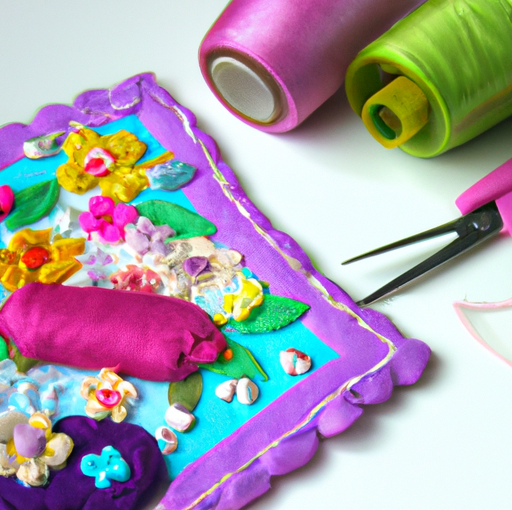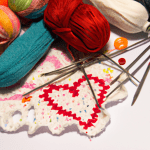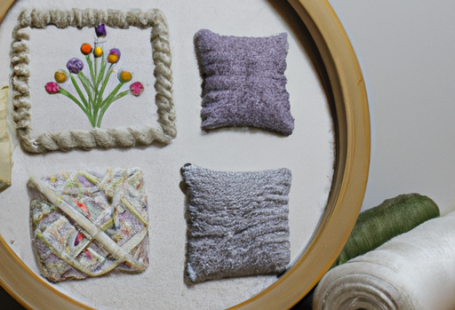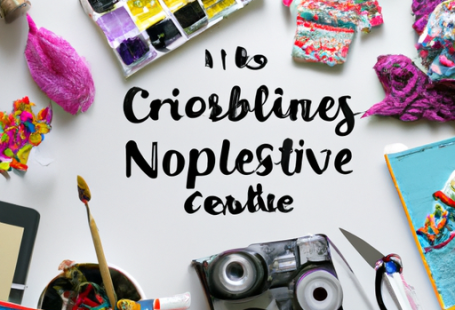Supplies Needed
Needlework is a wonderful and relaxing hobby that anyone can enjoy. Before getting started, you need to gather the right supplies. The materials you’ll need depend on the type of needlework you’ll be doing. Generally, you’ll need fabric, needles, and thread or yarn. For some projects, you may need additional materials such as embroidery hoops, scissors, and pins.
Fabric is a key component of any needlework project. Choose a sturdy cotton fabric for an even surface and a professional look. Make sure the fabric is pre-washed so that it won’t shrink after you’ve finished stitching.
Needles come in a variety of sizes and shapes. If you’re just getting started, a basic tapestry needle is a good choice. It has a blunt tip and a large eye, making it easier to thread with yarn. If you’ll be working with a thicker fabric, then a sharp needle may be a better choice.
Thread or yarn also come in many varieties. For embroidery, you may want to use a specialty thread, such as six-stranded cotton embroidery floss. For knitting or crochet, use a wool or acrylic yarn in a medium weight.
Types of Needlework
When you’re just getting started, it can be overwhelming to decide which type of needlework to choose. Here are some of the most popular types of needlework:
- Embroidery: Embroidery is a type of needlework that uses a needle and thread to create decorative designs on fabric. It’s a versatile craft that can be used to create a range of projects from simple patterns to complex designs.
- Knitting: Knitting is a type of needlework that uses two needles and yarn to create fabric. It’s ideal for creating clothing and accessories.
- Crochet: Crochet is similar to knitting, but it uses a single hook and yarn to create fabric. It’s great for making hats, amigurumi, and other three-dimensional items.
- Cross-stitch: Cross-stitch is a type of embroidery that uses a needle and thread to create simple patterns. It’s a great way to create decorative items such as wall hangings and pillows.
- Needlepoint: Needlepoint is a type of embroidery that uses a needle and thread to create more intricate and detailed designs. It’s often used for creating tapestries, rugs, and other decorative items.
Learning Basics
Now that you’ve gathered the supplies and decided on the type of needlework you’d like to do, it’s time to learn the basics. There are many resources available to help you learn the basics of needlework.
Books, magazines, and tutorials are all great ways to learn the basics of needlework. If you prefer a hands-on approach, consider taking a class or joining a needlework group. There are also many online resources such as YouTube videos and webinars to help you get started.
Tips for Stitching Success
Once you’ve mastered the basics, you’re ready to start stitching. Here are some tips for stitching success:
- Start small: It’s best to start out with a small project to get used to the techniques. This will help you gain confidence and practice your skills before tackling larger projects.
- Read instructions: Make sure to read the instructions carefully before starting a project. This will help ensure that you understand the steps and can complete the project correctly.
- Take your time: Don’t rush through a project. Take your time and enjoy the process of stitching. This will help you create a high-quality project that you can be proud of.
- Be patient: Needlework can be a slow process, so be patient. Don’t give up if you encounter a problem. With practice, you’ll get better and will be able to create amazing projects.
- Keep practicing: The best way to improve your skills is to keep practicing. The more you stitch, the better you’ll get. So don’t be afraid to experiment and try new techniques.
Needlework is a fun and rewarding hobby that anyone can enjoy. With the right supplies and a little practice, you’ll be stitching like a pro in no time. So grab your supplies and get ready to start stitching!





